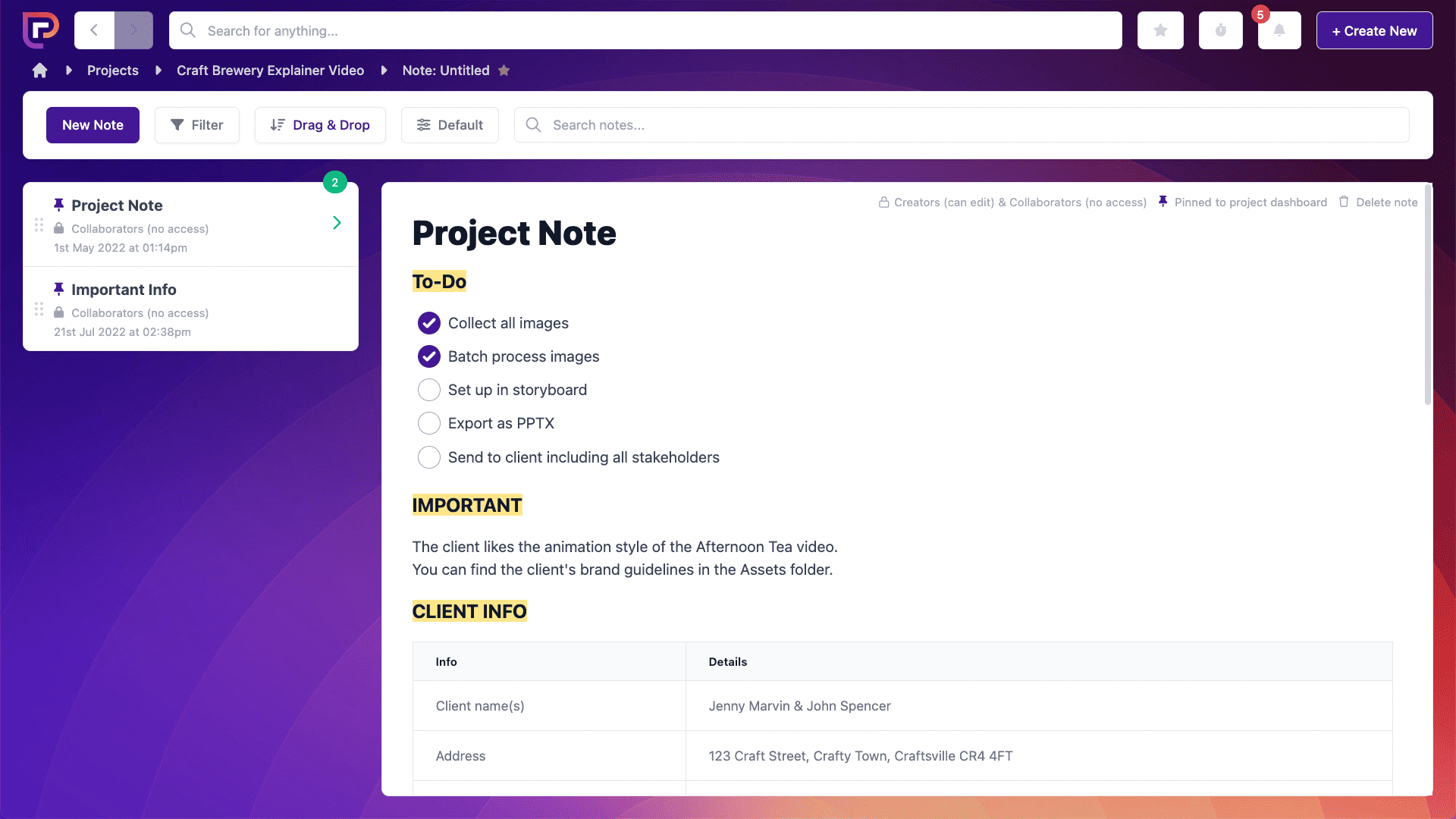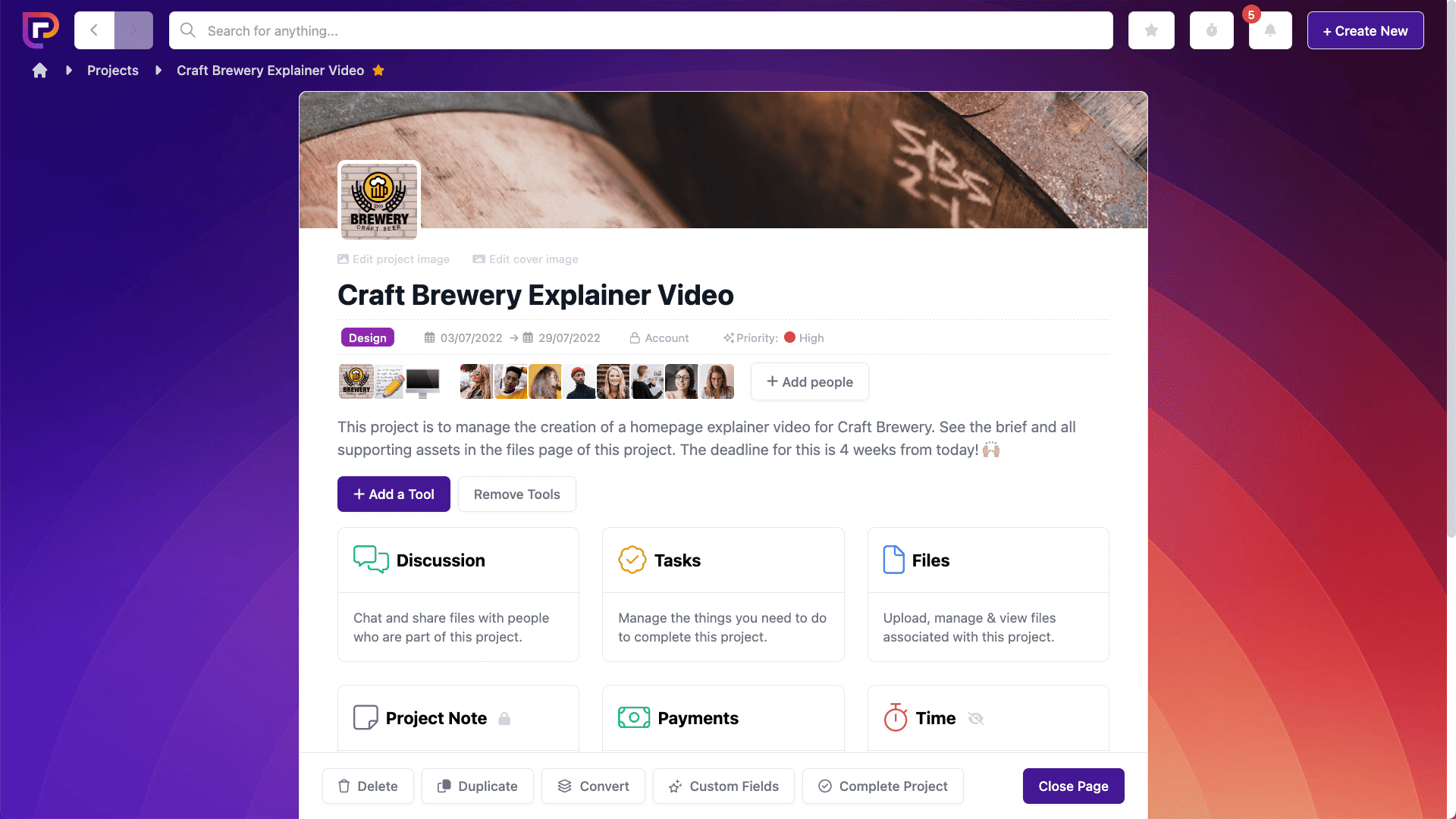Last updated on 23rd November 2023
Deadlines. Deliverables. Communication. People. Project management sounds sterile and mechanical.
When, in reality, it’s like managing a living, breathing thing. And everyone and every business has ‘their way’ of managing their own projects.
But, when it comes to projects on a larger scale, it’s best to have some guidelines to keep in mind throughout the whole process. At its very simplest definition ‘best practice’ means ‘the way that’s correct or most effective’, so by implementing a clear strategy or process, that’s your first win!
Because, let’s face it, managing a project can be daunting! There’s a lot that goes into just one single, stand alone project, let alone managing multiple at once.
Worryingly, less than 14% of people rate their business’ project management efficiency as excellent.
So, if you feel improvements could be made with how you currently manage projects, this article goes over the five project management best practices that’ll help you win!
1. Define project objectives
One of the first priorities after starting a new project should be to define the objectives of the project.
They are the ‘why’ and they’re important because they relate to all aspects of the project, including the purpose, the team, and all of their work.
Defining what the actual objectives are is important because:
- They give the project direction- objectives direct all of the activity throughout the project.
- They act as motivation- when objectives are put in place, it’s easier for employees to know exactly what’s expected of them. Their work is then more directed and as a result less time is wasted.
- They create standards- objectives set the standards of performance, they act as a measuring tool to identify the successes and failures of the project.
- They help with the planning process- creating objectives help form the structure of the project, the timeline and the tasks required to complete it.
Defined objectives can also help when working outside the scope of the project which gives it boundaries. For example, how many hours should be worked or how much money should be spent.
Deciding what’s in or out of scope will determine the amount of work that needs doing, and help control the workload for everyone involved.
To define your objectives you should:
- Write them down- making them accessible to the whole team and do this at the beginning of the project.
- Keep them brief- this helps them to be more attainable.
- Make them clear- have them laid out to show exactly what you want them to achieve from the project.
Then communicate your objectives throughout your whole team, to keep everyone completely up to date.
Tip: Create a brief at the start of each project that includes the start date, deadline, project objectives, people involved and any other important information.
2. Set up working and communication guidelines
Once your project is up and running, it’s important that everybody is crystal-clear about what they should be doing. So, consider setting up working and communication guidelines so everyone is always on the same page. These could include:
- Setting up time frames for certain tasks- if the project has different stages in order to complete it, put a time frame on how long each stage should take. Although this could be affected by feedback or client’s behaviours, it means you and your team are still delivering on your turnaround times. Plus, it helps motivate teams to get the work done in a timely manner. Meaning projects won’t keep getting stuck at one stage of the process. And then, in theory, should sail through, and you can move onto the next!
- Setting rules for how long in between messages or chases- no-one wants to chase for feedback every single day, it’s a sure-fire way to annoy everyone involved. But waiting for feedback for an infinite amount of time is also not useful to anyone. Make it a rule to chase a client after not hearing from them for x amount of days, to help keep the project moving for everybody.
- Setting payment guidelines- making sure you get paid is so important, but it can also get a bit awkward when you have to chase for it. Setting up payment guidelines can combat this. You want to take 50% of the payment upfront? Fine, make that a rule. As long as you clearly set out these guidelines from the beginning, and it’s communicated to your clients, you can!
- Make handovers a priority- the best work is usually delivered when the team are always communicating with each other, especially between the different stages of a project. So make handovers a priority. Whether it’s in person, via email or using a notes section.
On the image below you’ll see the notes section available on the Project.co system. Every project has its own notes page. This can be used in whichever way suits your business, and can be edited by your whole team, at different stages of the project.

Tip: Set expectations with your clients and the other people working on the project with you so everyone it’s clear what the process and timelines will look like. This gets everyone on the same page from the start of the project.
3. Keep everything in one place
As a standard, all information and all communication for the project should be kept in one place.
Things to be included:
- Project details
- Budgets/costings
- Past project information
- All project resources
- Discussion
- Task lists
Problems can often occur when team members keep things on their own desktop or in their personal files. For example, 65% of people have lost a file in their own inbox or on a personal hard drive. Incidents of lost files can have a huge impact on a project, time wise and financially.

This is beneficial as whoever is working on the project, at any time, can have everything they need in one place.
It’s also especially helpful if a staff member is unavailable for any reason, as anyone can pick up the work, with all the information they need.
Clients can also benefit from this, as chances are, they’re really busy! But, if you provide everything to do with their project in one place, it’s going to be much easier for them to manage.
Creating an enjoyable and simple work process for your client is a great thing to do. Not only will it make your projects run smoother, but if a client has a good experience, they’re likely to come back for more!
Tip: Have a single location for all files, communication and tasks on a project. This will make sure everyone who needs to know where the project is up to has all the information they need.
4. Keep in touch and check-in regularly
Checking in regularly is one of the easiest project management best practices that you can instantly add to your process. And can be one of the most impactful!
This refers to both in-house check ins and keeping in touch with clients. Regular check-ins create a sense of accountability, whether that’s with deliverables, feedback, or payments. It doesn’t have to be done with a ‘I’m looking over your shoulder’ vibe. But more like someone is here, ready to help you or improve if need be.
Keep in mind consistency when checking in and chasing. Setting guidelines can help, something along the lines of ‘biweekly check ins’. This helps to keep the feedback coming in, but means clients aren’t getting messages everyday, which could get, well, annoying.

Tip: Create private tasks to remind you to chase up clients or the people responsible for feeding back to you on a project. This means you don’t have to remember when to chase people up on each project and means you’ll have the capacity to manage and run more projects efficiently.
5. Have a kick-off and a wrap-up
It’s important to begin and end a project correctly.
A strong start sets the standard for the whole project and a kick-off meeting or even a call can help to align the whole team. Discuss what needs to be done and how it can be achieved. Then you’ll be in great shape to be able to outline the project objectives.
The meeting should include everyone who’s going to have a hand in the project, because as discussed many times in this article- consistency is key! This will help when communication is needed between team members further into the project.
Then, ending on a high note is a must, so a wrap-up meeting is a perfect opportunity to reflect on the good and the bad!
Go over lessons learned and what can be improved for next time. This can be of huge benefit. Make sure the environment is seen as an open one, for all team members to be able to share their thoughts, this will allow for maximum improvement.
Also, use this time to talk about all of the successes! This is a great way to motivate a team, and will help you decide which tactics to carry over to the next project.
Tip: After your kick off call set up tasks and allocate them to each person. This means everyone has a dated set of actions to take. At the end of the project review how the timeline evolved and work out where you can improve next time.
Final thoughts
As well as following best practices, you should be continually optimising your project management process. This will lead to the best possible results for your customers, plus financial and time savings for you!
Project.co can help! With Project.co all the information for each project is kept in one place giving your team and clients a single source of truth.


